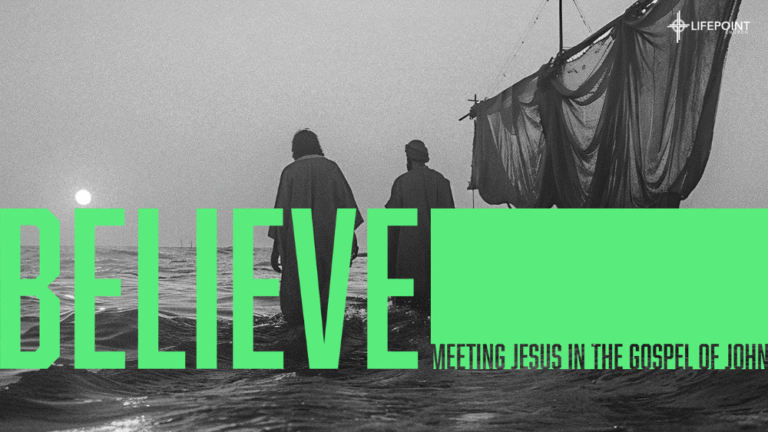John 11:1–44 · Trust the One who brings life out of death.
Big Idea: Trusting Jesus is a matter of life and death. He alone gives real and lasting life.
1) This Will Not End in Death
- Jesus delays on purpose. When He hears that His friend Lazarus is sick, He stays two days longer. Why? “It is for the glory of God.”
- Purpose over panic. Jesus’ love doesn’t mean avoiding pain; it means revealing God’s glory through it.
- Thomas’ courage. “Let us also go, that we may die with him.” Even when afraid, faith moves toward Jesus.
2) “I Am the Resurrection and the Life”
- Martha’s hope. She knows her brother will rise “on the last day.”
- Jesus’ correction. Resurrection isn’t just an event—it’s a Person. “I am the resurrection and the life.”
- Optional or necessary? Jesus doesn’t present Himself as a helpful add-on. Without Him, there is no life—now or forever.
3) Jesus Wept
- Fully divine, deeply human. He knows He will raise Lazarus—yet He weeps.
- Grief and glory can coexist. Real faith doesn’t deny sorrow. Even with hope, we mourn what sin has broken.
- Our comfort. Jesus meets us in our tears. His compassion is not theoretical—it’s felt.
4) Move the Stone
- Martha hesitates. “Lord… there will be an odor.”
- Jesus insists. “Did I not tell you that if you believed you would see the glory of God?”
- Faith acts. Sometimes obedience means removing the stone that seems safest to leave shut.
5) Lazarus, Come Out
- Death obeys His voice. Jesus calls a dead man—and he walks out.
- Only God can do that. This miracle isn’t just about Lazarus; it’s a preview of our own resurrection in Christ.
- He still calls names. Jesus is still the resurrection and the life, still calling people from death to life today.
How It Lands for Us
- Believe: Jesus’ question still stands—“Do you believe this?”
- Hope: Your story will not end in death; it will end in glory.
- Act: Move the stone. Obey what He’s already told you to do.
- Worship: Weep when it’s time to weep. Rejoice that death will not have the last word.

